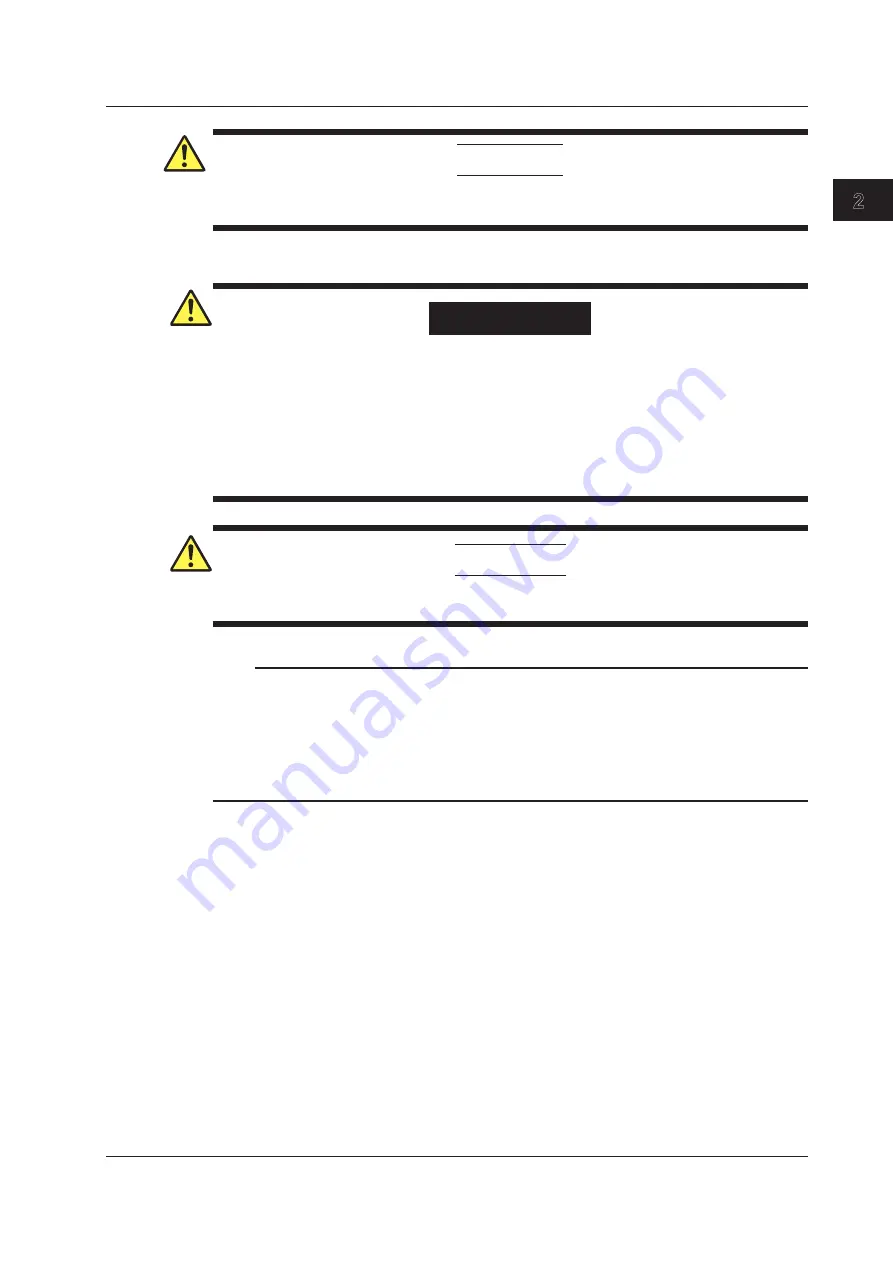
2-39
IM WT310E-02EN
Making Preparations for Measurements
1
2
3
4
5
6
7
App
Index
CAUTION
The thick lines on the wiring diagrams are the parts where the current flows. Use wires that
are suitable for the current levels.
French
AVERTISSEMENT
Lors du branchement d’un câble de mesure d’un capteur de courant externe sur un
connecteur d’entrée de capteur de courant externe, retirer les câbles branchés sur les bornes
d’entrée de courant. Parce que la borne d’entrée de capteur de courant externe et la borne
d’entrée de courant sont connectées en interne, la connexion des deux bornes simultanément,
non seulement entraîne des erreurs de mesure, mais peut également endommager
l’instrument. De plus, lorsque la tension du circuit à mesurer est appliquée aux bornes d’entrée
de capteur de courant externe, ne pas toucher les bornes d’entrée de courant, car elles sont
connectées électroniquement à l’intérieur de l’instrument, ce qui présente un danger.
ATTENTION
Les lignes épaisses sur les schémas de câblage illustrent l’acheminement du courant. Utiliser
des fils qui conviennent aux niveaux de courant.
Note
• Make sure that you have the polarities correct when you make connections. If the polarity is reversed,
the polarity of the measurement current will be reversed, and you will not be able to make correct
measurements. Be especially careful when connecting clamp-type current sensors to the circuit under
measurement, because it is easy to reverse the connection.
• Note that the frequency and phase characteristics of the current sensor affect the measured data.
• To measure the apparent power and power factor more accurately on an unbalanced three-phase circuit,
we recommend that you use the three-voltage, three-current method (3V3A).
Notes about Using Shunt-type Current Sensors and Clamp-on
Probes
Connecting an External Current Sensor Cable
To minimize error when using shunt-type current sensors, follow the guidelines below when
connecting the external current sensor cable.
• Connect the shielded wire of the external current sensor cable to the L side of the shunt output
terminal (OUT).
• Minimize the area of the space between the wires connecting the current sensor to the external
current sensor cable. This reduces the effects of the lines of magnetic force (which are caused
by the measurement current) and the external noise that enter the space.
2.10 Wiring the Circuit under Measurement When Using Current Sensors






























